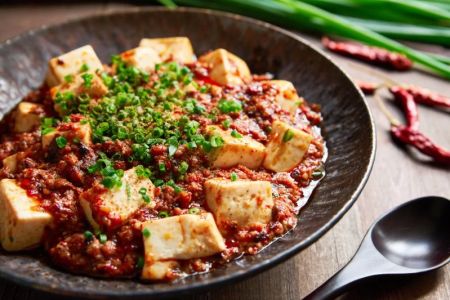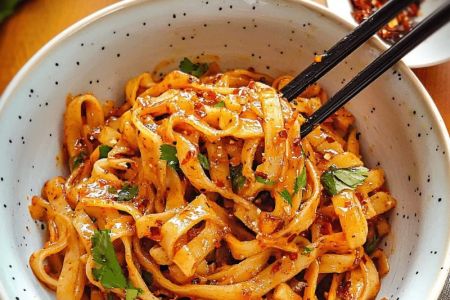What Do People Eat in China? A Culinary Exploration
When thinking about what people eat in China, it's important to understand that Chinese cuisine is as diverse as its landscape. From the bustling streets of Beijing to the tranquil settings of Sichuan, every region has its own unique flavors and dishes. In this article, we'll take you on a culinary journey through China, exploring some of the most popular foods people enjoy across the country. Whether you're planning a trip to China or simply curious about its food culture, this guide will provide insight into the eating habits of the Chinese people.
1. The Foundation of Chinese Cuisine: Rice and Noodles
In China, rice and noodles are the foundation of many meals. In southern China, rice is the staple food, while in the northern regions, wheat-based noodles and dumplings dominate. The versatility of rice is truly remarkable; it can be served plain, fried, or even transformed into congee, a comforting rice porridge often eaten for breakfast. Noodles, on the other hand, are made in countless shapes and sizes, from thin strands to wide ribbons, and are often paired with savory broths or stir-fried with vegetables and meats.
2. Famous Chinese Dishes: A Closer Look
While China is home to thousands of different dishes, there are a few that stand out as staples of Chinese cuisine:
- Peking Duck: Known for its crispy skin and tender meat, Peking Duck is one of the most famous dishes in Beijing. It is typically served with thin pancakes, hoisin sauce, and sliced vegetables.
- Dim Sum: A Cantonese tradition, dim sum consists of a variety of bite-sized dishes, such as dumplings, buns, and spring rolls. These are often enjoyed with tea during breakfast or lunch.
- Mapo Tofu: A spicy and flavorful dish from Sichuan cuisine, Mapo Tofu features tofu cooked in a spicy sauce made with chili bean paste, garlic, and Sichuan peppercorns.
- Hot Pot: A communal dining experience, hot pot allows diners to cook their own meat, seafood, and vegetables in a bubbling broth at the table.
3. Street Food Culture: Quick and Tasty Bites
Street food is an integral part of Chinese food culture. Whether you're in a bustling city or a small village, you'll find vendors selling delicious and affordable snacks. Common street foods include:
- Jianbing: A savory pancake filled with egg, vegetables, and sauces, jianbing is a popular breakfast street food in China.
- Chuanr: These skewered meats, usually lamb or chicken, are grilled over open flames and are often spiced with cumin and chili powder.
- Xiaolongbao: These soup dumplings, filled with flavorful broth and meat, are typically steamed and served in small bamboo baskets.
4. Regional Specialties: A Taste of Diversity
One of the most fascinating aspects of Chinese cuisine is its regional diversity. Different regions have their own unique flavors and ingredients that reflect the local climate, geography, and culture:
- Sichuan: Known for its bold and spicy flavors, Sichuan cuisine uses a lot of chili peppers and Sichuan peppercorns. Dishes like Kung Pao Chicken and Hot Pot are beloved across the country.
- Cantonese: Famous for its fresh ingredients and delicate flavors, Cantonese cuisine is popular worldwide. Dim sum, roasted meats, and seafood dishes are staples of this region.
- This coastal region is known for its seafood, particularly dishes like sweet and sour crab. The cuisine emphasizes freshness and natural flavors.
- Jiangsu and Zhejiang: These regions are known for their sweet and savory dishes, often incorporating ingredients like freshwater fish, bamboo shoots, and mushrooms.
5. Tea Culture: More Than Just a Beverage
In China, tea is much more than just a drink—it's an essential part of daily life and meals. There are many varieties of tea, including green tea, oolong tea, and black tea, each with its own unique taste and health benefits. Tea is often served with meals or during traditional tea ceremonies, where it is prepared with great care and attention to detail. Some regions, such as Fujian, are known for their exquisite tea leaves, which are highly prized by tea connoisseurs around the world.
6. The Influence of Globalization on Chinese Food
As China has become more integrated into the global economy, its food culture has evolved to include international influences. Fast food chains like McDonald's and KFC have become popular in major cities, offering a taste of Western cuisine. However, traditional Chinese foods still dominate, and many restaurants are incorporating global ingredients and cooking techniques to create fusion dishes. This blending of cultures has led to the rise of unique food trends, such as Chinese-inspired pizzas and burgers.
7. Dining Etiquette: How Chinese People Eat
Chinese dining etiquette is an important aspect of the cultural experience. Meals are often served family-style, with several dishes placed in the center of the table for everyone to share. It’s customary to serve tea to guests, and it’s polite to wait for the eldest or most senior person at the table to begin eating. In many households, the meal is a time for bonding and conversation, and the focus is on enjoying the food together rather than rushing through the meal.
Whether you’re traveling to China or simply curious about what people eat in the country, it’s clear that Chinese cuisine offers a wealth of flavors, textures, and experiences. From street food to fine dining, there’s something for everyone to enjoy. The next time you explore Chinese food, take the time to savor the diversity and richness of the dishes that make this cuisine so special.







